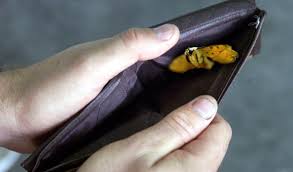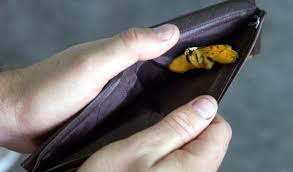
In Australia, mortgage arrears are creeping up, lenders’ bad debt provisions have increased and personal insolvencies are near an all-time high are the three warning signs that back up the spike in demand and consumers and property investors around Australia are making more calls to financial helplines.
“Its steadily out of control -- I don’t know of too many financial counseling services where demand doesn’t exceed supply,” said Fiona Guthrie, chief executive officer of Financial Counselling Australia. People suffering mortgage stress are the ones that are making the most calls, Guthrie says. “There are more people who have got mortgages that they can’t afford to pay.”
Amid a housing boom that’s fizzled out in parts of the country, but still roaring in Sydney and Melbourne and after bingeing on more than A$1 trillion ($766 billion) of mortgages, Australia’s households are among the world’s most indebted. A worsening of credit metrics has seen executives and analysts take a more cautious tone while most are capably servicing their debts. And as Governor Philip Lowe places financial stability at the forefront of monetary policy, it’s also a key factor in the central bank’s rate decisions this year.
Encouraged by low interest rates, from around 70 percent in the early 1990s, Australians’ private debt has soared to 187 percent of their income. Many feel they are closer to their borrowing capacity than they once were while most households are managing these levels of debt, said Lowe in a November speech.
The governor said conditions “vary considerably” around the country as prices in some markets continue to rise “briskly,” and when the RBA left the benchmark cast rate at a record-low 1.5 percent in its first decision of the year, the governor to note of Australia’s divergent housing market on Tuesday.
“There’s so much household debt that a couple of rate hikes here would completely knock the wind out of the housing market, and a lot of people would be impacted by it,” said Gareth Aird, economist at Commonwealth Bank of Australia, the nation’s largest lender.
As prices keep rising, most borrowers in Sydney have plenty of equity in their homes. However things are different elsewhere. According to a Roy Morgan report last week, more than 10 percent of mortgage holders have little or no equity buffer in the mining state of Western Australia, which is struggling to cope with the end of an investment boom. 8 percent and 7.2 percent of borrowers respectively are in negative equity in South Australia and Queensland.
However, if you’re a homeowner with a secure job and comfortably servicing your mortgage that may not matter. But with the RBA citing it as one of the economy’s biggest uncertainties, Australia’s labor market is far from solid. While underemployment -- the number of workers wanting more hours -- is near an all-time high, the jobless rate rose for the second straight month in December to 5.8 percent. Wages growth is the lowest on record.
PricewaterhouseCoopers says that annual cash earnings at Australia’s big four banks fell last year for the first time since the financial crisis after a seven year bull-run. But noting the highest since 2012 and jumping 39 percent to reach A$5.1 billion is their bad debt expenses - which encompass both business and consumer lending.
(Source:www.bloomberg.com)
“Its steadily out of control -- I don’t know of too many financial counseling services where demand doesn’t exceed supply,” said Fiona Guthrie, chief executive officer of Financial Counselling Australia. People suffering mortgage stress are the ones that are making the most calls, Guthrie says. “There are more people who have got mortgages that they can’t afford to pay.”
Amid a housing boom that’s fizzled out in parts of the country, but still roaring in Sydney and Melbourne and after bingeing on more than A$1 trillion ($766 billion) of mortgages, Australia’s households are among the world’s most indebted. A worsening of credit metrics has seen executives and analysts take a more cautious tone while most are capably servicing their debts. And as Governor Philip Lowe places financial stability at the forefront of monetary policy, it’s also a key factor in the central bank’s rate decisions this year.
Encouraged by low interest rates, from around 70 percent in the early 1990s, Australians’ private debt has soared to 187 percent of their income. Many feel they are closer to their borrowing capacity than they once were while most households are managing these levels of debt, said Lowe in a November speech.
The governor said conditions “vary considerably” around the country as prices in some markets continue to rise “briskly,” and when the RBA left the benchmark cast rate at a record-low 1.5 percent in its first decision of the year, the governor to note of Australia’s divergent housing market on Tuesday.
“There’s so much household debt that a couple of rate hikes here would completely knock the wind out of the housing market, and a lot of people would be impacted by it,” said Gareth Aird, economist at Commonwealth Bank of Australia, the nation’s largest lender.
As prices keep rising, most borrowers in Sydney have plenty of equity in their homes. However things are different elsewhere. According to a Roy Morgan report last week, more than 10 percent of mortgage holders have little or no equity buffer in the mining state of Western Australia, which is struggling to cope with the end of an investment boom. 8 percent and 7.2 percent of borrowers respectively are in negative equity in South Australia and Queensland.
However, if you’re a homeowner with a secure job and comfortably servicing your mortgage that may not matter. But with the RBA citing it as one of the economy’s biggest uncertainties, Australia’s labor market is far from solid. While underemployment -- the number of workers wanting more hours -- is near an all-time high, the jobless rate rose for the second straight month in December to 5.8 percent. Wages growth is the lowest on record.
PricewaterhouseCoopers says that annual cash earnings at Australia’s big four banks fell last year for the first time since the financial crisis after a seven year bull-run. But noting the highest since 2012 and jumping 39 percent to reach A$5.1 billion is their bad debt expenses - which encompass both business and consumer lending.
(Source:www.bloomberg.com)





